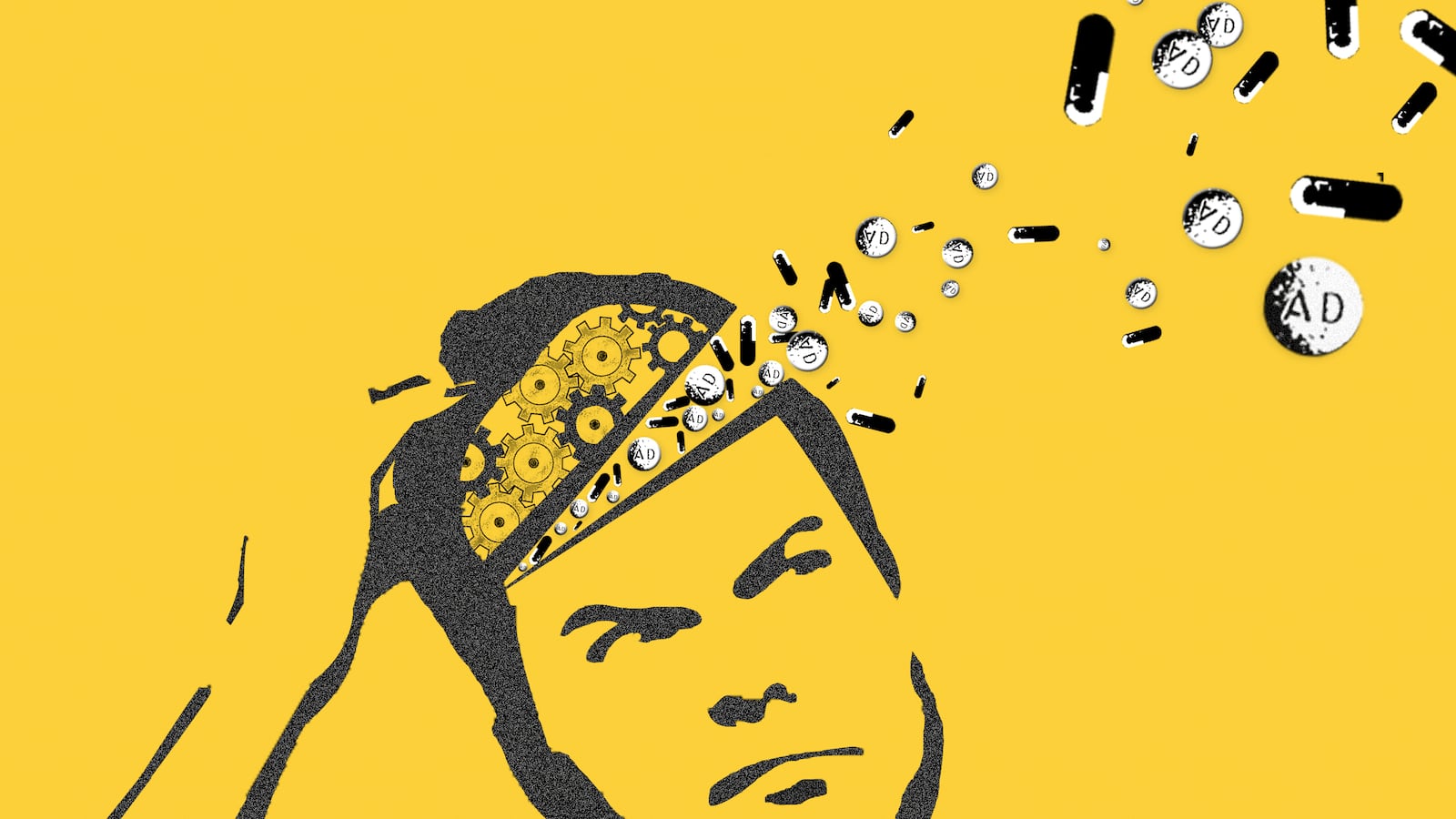Around college campuses these days, it seems that exams and amphetamines go in hand in hand.
A recent study from Brigham Young University mined over 200,000 tweets from college students, discovering mentions of the prescription drug Adderall peaked near the end of the fall semester—to three times the average rate. The findings support the common knowledge that all-night cram sessions very often begin with a little help from what High Times calls “America’s Favorite Amphetamine.”
Since its initial release in 1996, prescriptions for Adderall have more than tripled. Of course, many students using Adderall never get a prescription at all. And many who do have a prescription faked their symptoms. Just last year, the demand for the drug—originally meant to treat attention deficit hyperactivity disorder (ADHD) and narcolepsy—was so high that patients were turned away from their local pharmacies and the DEA eventually had to increase the drug makers’ annual amphetamine allotment to combat the shortage.
So who’s using Adderall, and what risks are they running? Here is your crib sheet on the pills so many college kids pop.
1. It’s a real drug, but nobody thinks so.
Adderall and Ritalin are DEA Schedule II substances. This means, they have a “high potential for abuse,” can “lead to severe psychological or physical dependence” and are considered “dangerous” (less than heroin, more than Valium).
Despite these warnings and strict regulation by the DEA, only 2 percent of students in a nationwide study say its use is “very dangerous.” Eighty-one percent think nonmedical use is “not dangerous at all” or only “slightly dangerous.”
2. It’s all over college campuses.
Two-thirds of college students are offered Adderall and other prescription stimulants by their senior year, and about half of that group (or 31 percent overall) are just saying yes, according to a 2012 study published in the Journal of American College Health.
3. Most people still get it from a friend.
The 2012 study also found that 74 percent of all college nonmedical users get the drugs from a friend with a prescription. But users learn quickly it’s easier with their own. The students using stimulants non-medically with a prescription rises from 3.1 percent of freshman to 8.1 percent by senior year.
4. And a prescription is so easy to get.
The tests administered to determine ADHD are self-reported checklists and can be easily faked. A 2008 experiment (PDF) with undergrads taking a psychology course found that up to 93 percent of students were able to game the system and get a positive diagnosis.
One experiment from the University of Kentucky found that students could successfully get a false positive diagnosis with just five minutes of Google searching on ADHD symptoms.
And the neuropsychological tests, in which patients are diagnosed by completing complex tasks, don’t fare any better when it comes to weeding out the fakers. In the University of Kentucky study, these more complex tests weren’t able to distinguish between people who actually suffer from ADHD and those with no symptoms at all.
5. There is a type of user—he’s white, he drinks, and his grades aren’t so good.
There are currently 1.2 million Americans 12 and older using stimulants non-medically, according to the Substance Abuse and Mental Health Services Administration. This hasn’t changed significantly in the last decade.
Several studies like this one from the University of Michigan find that certain demographic factors are more common in nonprescription users. Users are more often white, male, members of fraternities or sororities, and have lower grade point averages. Students with a history of drug and alcohol use are also more likely to take stimulants for nonmedical reasons. Additionally, users are more likely to go to colleges in the north-east with more competitive admission standards.
6. Adderall can be dangerous.
Between 2005 and 2010, emergency room visits related to ADHD stimulant medications used non-medically tripled from 5,212 to 15,585 visits. In young adults, the number almost quadrupled. Nearly half of these visits were due to mixing ADHD drugs with other drugs or alcohol.
In fact, a third of student users report they take prescription stimulants to “stay awake to party.” An overwhelming 90 percent of college students who use Adderall non-medically also reported binge drinking, according to the National Survey on Drug Use and Health.
The result of all this mixing isn’t good. Continuous use of the alcohol/Adderall cocktail “can lead to psychological issues such as paranoia, anxiety, and severe depression. Physically, it can cause nausea, vomiting, weight loss, heart palpitations, and headaches.” Long-time users can expect “convulsions, arrhythmias, fevers, malnutrition, tremors, and muscle twitching,” according to a report by Indiana doctor Ron Holmes. A 2012 report states, the sporadic use of Adderall with alcohol can cause “serious cardiovascular adverse effects.”
7. Kids are starting earlier.
In 2009, 5.4 percent of high school seniors were using Adderall without a prescription. By 2012, it was 7.6 percent. It is in fact, the only drug that saw an increase in use among high schoolers last year, according to a national report for the National Institute on Drug Abuse (PDF).






